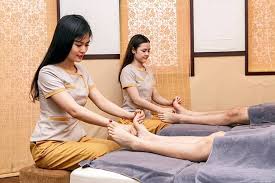Massage, an ancient practice with roots in diverse cultures, has evolved into a multifaceted therapy that blends art with science. Far from being merely a luxury or indulgence, 다낭 마사지 업소별 추천 [TOP3] 왕실장이 알려드립니다 has been shown to offer a range of physical, emotional, and psychological benefits. This article delves into the intricacies of massage, exploring its history, techniques, benefits, and modern applications.
Historical Perspectives
The origins of massage can be traced back over 5,000 years to ancient civilizations. The Chinese, Egyptians, Greeks, and Romans all utilized various forms of touch therapy to promote healing and well-being. For example, the Chinese practiced tui na, a form of manual therapy that involves kneading, rolling, and pressing. In ancient Egypt, inscriptions on tombs reveal that massage was used in conjunction with other healing practices.
Hippocrates, the father of medicine, is credited with recognizing the therapeutic potential of massage. He advocated for its use to relieve muscle pain and enhance overall health. Throughout the centuries, massage techniques were refined and adapted by various cultures, contributing to the rich tapestry of practices we see today.
Techniques and Modalities
Massage encompasses a wide array of techniques, each with its unique approach and benefits. Some of the most well-known methods include:
- Swedish Massage: Often considered the most common type, Swedish massage employs long, flowing strokes to promote relaxation, improve circulation, and relieve muscle tension. It’s typically used for general wellness and stress reduction.
- Deep Tissue Massage: This technique targets the deeper layers of muscle and connective tissue. By applying firm pressure and focusing on specific problem areas, deep tissue massage helps alleviate chronic pain and muscle stiffness.
- Shiatsu: Originating in Japan, shiatsu is a form of acupressure that involves applying pressure to specific points on the body to balance energy flow. It is based on traditional Chinese medicine principles and aims to promote overall health and vitality.
- Thai Massage: Combining elements of yoga, acupressure, and assisted stretching, Thai massage is a dynamic and energizing practice. It is performed on a mat on the floor and involves a series of movements designed to increase flexibility and release tension.
- Hot Stone Massage: This therapeutic technique uses heated stones placed on specific points on the body. The warmth of the stones helps relax muscles, improve circulation, and provide a soothing experience.
Benefits of Massage
The benefits of massage extend beyond mere relaxation. Scientific research has highlighted several key advantages, including:
- Pain Relief: Massage can be an effective remedy for various types of pain, including chronic back pain, migraines, and muscle soreness. By reducing muscle tension and improving blood flow, massage helps alleviate discomfort and enhance mobility.
- Stress Reduction: One of the most well-documented benefits of massage is its ability to reduce stress. The release of endorphins, combined with the physical relaxation of muscles, helps lower cortisol levels and promote a sense of calm.
- Improved Circulation: Massage techniques stimulate blood flow, which can aid in the delivery of oxygen and nutrients to tissues. Enhanced circulation supports the body’s natural healing processes and can be particularly beneficial for individuals with poor circulation or certain medical conditions.
- Enhanced Flexibility: Regular massage can improve flexibility by reducing muscle stiffness and promoting relaxation. This is particularly useful for athletes and individuals engaged in physical activities that place strain on the muscles.
- Better Sleep: Many people find that massage improves their sleep quality. The relaxation induced by massage can help with insomnia and promote a more restful, restorative sleep.
Modern Applications and Future Directions
In the modern era, massage therapy continues to evolve with advancements in technology and research. Techniques are increasingly being tailored to address specific conditions, such as sports injuries or post-surgical rehabilitation. Integrative approaches, combining massage with other therapies like physical therapy or acupuncture, are gaining popularity.
Furthermore, the rise of self-care and wellness trends has led to the development of innovative massage tools and devices. From handheld massagers to sophisticated massage chairs, these technologies offer convenient ways for individuals to experience the benefits of massage at home.
As research continues to uncover new insights into the physiological and psychological effects of massage, the practice is likely to grow in both scope and sophistication. The future of massage therapy holds promise for enhanced therapeutic techniques, personalized treatments, and a deeper understanding of its role in holistic health.
Conclusion
Massage is much more than a simple act of touch; it is a complex interplay of art and science that has stood the test of time. With its rich history, diverse techniques, and proven benefits, massage remains a valuable tool for promoting physical and emotional well-being. Whether you’re seeking relief from pain, relaxation from stress, or a boost to your overall health, massage offers a versatile and effective solution that continues to captivate and heal across cultures and generations.
